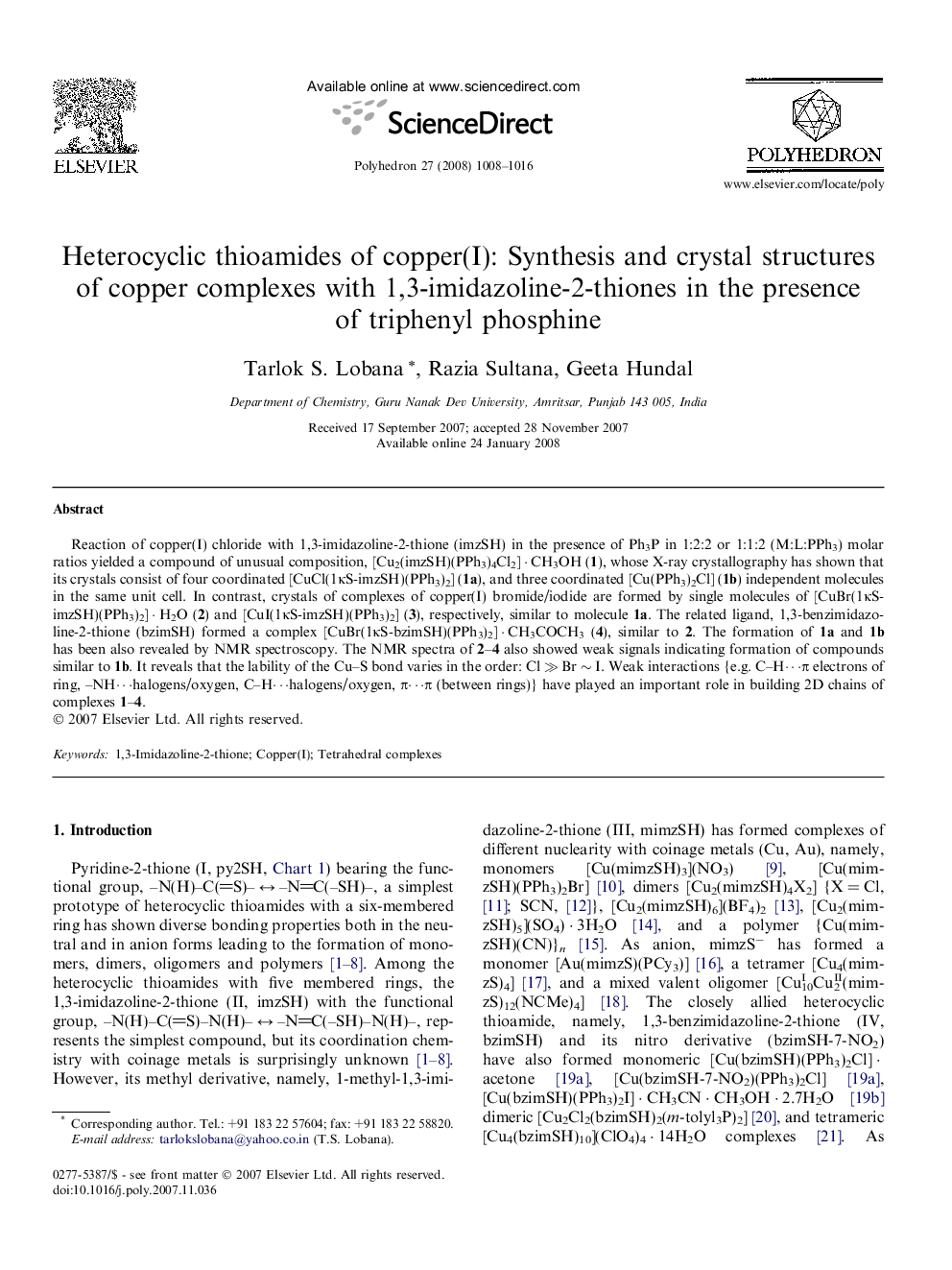| Article ID | Journal | Published Year | Pages | File Type |
|---|---|---|---|---|
| 1340714 | Polyhedron | 2008 | 9 Pages |
Reaction of copper(I) chloride with 1,3-imidazoline-2-thione (imzSH) in the presence of Ph3P in 1:2:2 or 1:1:2 (M:L:PPh3) molar ratios yielded a compound of unusual composition, [Cu2(imzSH)(PPh3)4Cl2] · CH3OH (1), whose X-ray crystallography has shown that its crystals consist of four coordinated [CuCl(1κS-imzSH)(PPh3)2] (1a), and three coordinated [Cu(PPh3)2Cl] (1b) independent molecules in the same unit cell. In contrast, crystals of complexes of copper(I) bromide/iodide are formed by single molecules of [CuBr(1κS-imzSH)(PPh3)2] · H2O (2) and [CuI(1κS-imzSH)(PPh3)2] (3), respectively, similar to molecule 1a. The related ligand, 1,3-benzimidazoline-2-thione (bzimSH) formed a complex [CuBr(1κS-bzimSH)(PPh3)2] · CH3COCH3 (4), similar to 2. The formation of 1a and 1b has been also revealed by NMR spectroscopy. The NMR spectra of 2–4 also showed weak signals indicating formation of compounds similar to 1b. It reveals that the lability of the Cu–S bond varies in the order: Cl ≫ Br ∼ I. Weak interactions {e.g. C–H⋯π electrons of ring, –NH⋯halogens/oxygen, C–H⋯halogens/oxygen, π⋯π (between rings)} have played an important role in building 2D chains of complexes 1–4.
Graphical abstractReaction of copper(I) chloride with 1,3-imidazoline-2-thione (imzSH) in the presence of Ph3P has yielded four coordinated [CuCl(1κS-imzSH)(PPh3)2] (1a), and three coordinated [Cu(PPh3)2Cl] (1b) independent molecules in the same unit cell. Copper(I) bromide and iodide only formed four coordinated complexes, [CuX(1κS-imzSH)(PPh3)2] (X = Br, I), similar to 1a.Figure optionsDownload full-size imageDownload as PowerPoint slide
